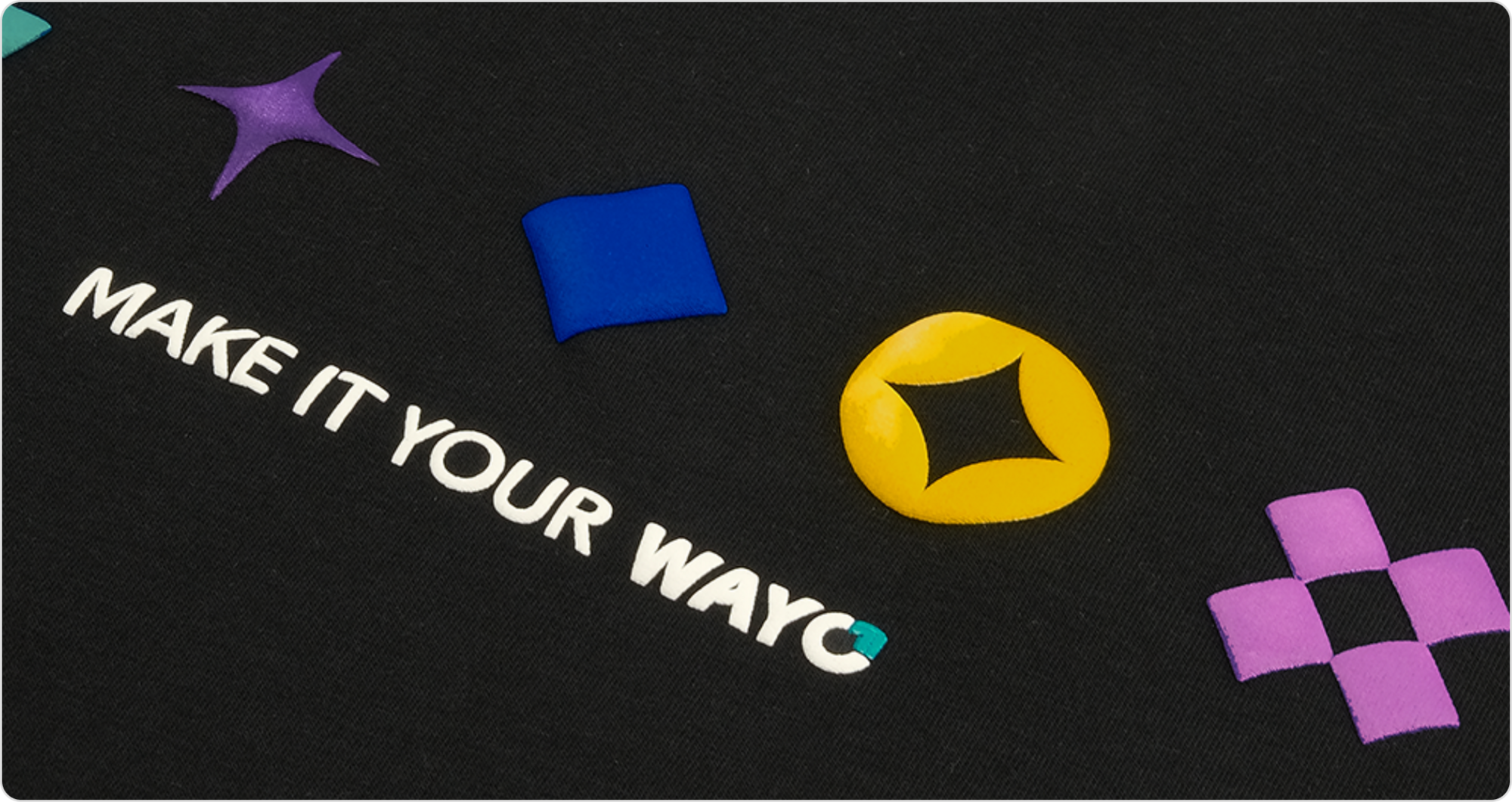Puff printing

Are you looking for a way to make your custom t-shirts and apparel truly stand out? Puff printing might be the solution you’re looking for.
This unique 3D screen printing technique adds a tactile, three-dimensional effect to your designs, grabbing attention and taking your custom merch to the next level.
Yes – puff printing works similarly to screen printing, but there are some quirks and nuances we need to walk through.
So read on as we explore what puff printing is, how it works, and the best ways to incorporate this eye-catching technique into your custom apparel projects.
What is puff printing, and how does the puff effect work?
Puff printing, also known as raised ink or 3D printing, is a specialized screen printing technique that creates a raised, textured effect on fabric.
It makes the printed design literally "puff up" from the surface of the garment, adding depth and dimension that you can both see and feel.
To achieve this unique effect, a special puff ink containing an expanding agent is used. During the curing process, when the printed design is exposed to heat, the expanding agent causes the ink to rise and expand, creating the signature 3D texture.
You can control the level of puffiness by adjusting factors like the amount of ink used and the heat settings during curing.
The end result? Puff printing produces designs that stand out both visually and tactilely, making it an excellent choice for creating eye-catching logos, graphics, and text on custom apparel.
How does the puff printing process work?
Now that you understand what puff printing is and how the puff effect is achieved, let's take a closer look at the step-by-step process involved in creating a puff print design:
- Design preparation: The first step is to create a design suitable for puff printing. Bold, simple designs with clean lines and minimal small details work best.
- Screen setup: Next, the design is separated into individual colors and burned onto screens, just like in traditional screen printing.
- Ink application: The puff ink is then applied to the screens and pressed through onto the fabric using a squeegee. A generous amount of ink is typically used to ensure a pronounced raised effect.
- Heat curing: After the ink is applied, the garment is placed in a dryer or conveyor dryer. Heat activates the expanding agent in the ink, causing it to puff up and create the desired 3D texture. Precise temperature control is key to achieving the perfect level of puffiness.
- Final touches: Once the ink has cooled and set, the garment is ready to wear. No additional special care or finishing is required.
While puff printing does require some extra skill and attention compared to standard screen printing, the eye-catching, tactile results are well worth the effort.
Advantages and disadvantages of puff printing
Like any custom apparel decoration method, puff printing has its pros and cons. Let's take a look at some of the key advantages and disadvantages:
Advantages of puff printing:
- Produces an eye-catching 3D effect that “pops” from the surface of the fabric
- Adds a unique tactile element to designs
- Works well on a variety of fabric types and garment styles
- Durable and long-lasting when properly cured
- Can be combined with other printing methods for even more visual interest
Disadvantages of puff printing:
- Typically limited to simpler designs with fewer colors
- Not ideal for designs with very fine details or small text
- May require higher minimum order quantities compared to standard screen printing
- Can be more expensive than traditional screen printing due to specialized inks and additional production time
Despite these limitations, puff printing remains a highly popular choice for custom apparel projects that demand a bold, impactful aesthetic.
The best designs for puff printing
To get the most out of puff printing, it's important to choose designs that play to the technique's strengths. Here are some types of designs that work particularly well with puff ink:
- Bold, simple graphics with clean lines and minimal small details
- Oversized text in thick, sans-serif fonts
- Iconic logos and symbols
- Designs that benefit from a tactile, three-dimensional effect
When creating a puff printing design, remember that very fine details and small text may get lost in the puffing process. It's typically best to stick with larger, simpler elements for maximum impact.
Best products for puff printing
Puff printing works well on a wide range of garments and accessories, but some products are particularly well-suited to this eye-catching technique. Some of the most popular items for puff printing include:
- T-shirts and sweatshirts
- Hoodies and jackets
- Hats and caps
- Tote bags and backpacks
- Jerseys and team uniforms
When choosing a garment for puff printing, it's generally best to opt for items made from sturdy, heavy-weight fabrics like cotton, polyester, or blends.
These materials can better support the weight and texture of the puff ink without sacrificing comfort or durability.